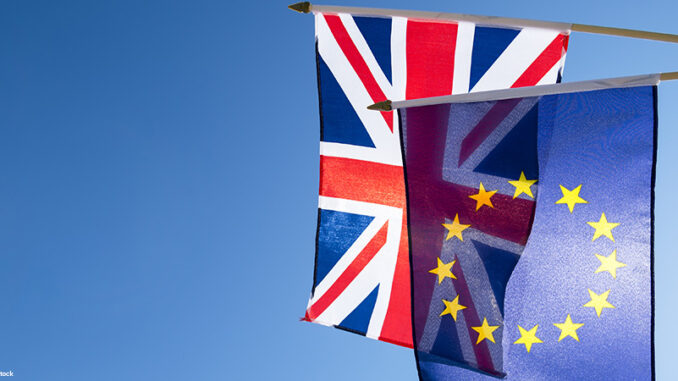
Death of ISIS Leader Raises Questions
You might not have heard of ISIS leader Abu Bakr al-Baghdadi before he was killed at the end of October in Syria, but now his death is making headlines across the world. Baghdadi has spent much of his rule in hiding. But Trump announced that Baghdadi was killed by U.S. forces during a military operation in Syria. U.S. forces attacked the compound where Baghdadi was hiding. Once trapped, Baghdadi used a suicide vest that killed himself and three children. A DNA analysis of the remains confirmed that they were indeed Baghdadi’s.
There are, however, some skeptics in parts of the world (usually in places that are very critical of the United States) that wonder whether or not Baghdadi was really killed. Trump has indicated that he might make some of the footage of the incident public to dispel rumors. But there are Syrian civilians reluctant to rejoice in the ISIS leader’s death. There are several reasons for this. The first is that ISIS itself will continue, even if one of its leaders has been killed. (Remember that Osama bin Laden’s death, unfortunately, didn’t mean the end of either al Qaeda of terrorist opposition in the Middle East.) The very real fear exists that as soon as one leader is eliminated, another will step up. Another reason is the distrust of the United States that is pervasive in that area of the world, where U.S. forces are often responsible for the deaths of civilians as well as militants. As a result, many people in this region are reluctant to support anything Trump or the U.S. government says or does.
Dig Deeper ISIS has released a statement confirming Baghdadi’s death and naming his successor: Abu Ibrahim al-Hashimi al-Quraishi. Who is he? Use Internet resources to find out more.
Brexit Delayed . . . Again
The deadline for Brexit–the separation of the UK from the rest of the European Union (EU)–came and went on October 31. So what happened?

Brexit has been a worldwide nail-biter for years now. As the deadline loomed, economic and political experts dreaded one outcome more than any other: that Britain would leave the European Union with no deal in place for what to do about tariffs, immigration, or borders–the so-called “no deal” Brexit. Meanwhile, ever since taking office in July, Prime Minister Boris Johnson has supported a no-deal Brexit, even taking unconstitutional actions to prevent Parliament from meeting to work on a deal, and has insisted that he would refuse any attempt to extend the deadline past October 31.
Fast-forward to now: what’s the status with Brexit? In short: the deadline has been postponed.
Again.
On October 28, the EU agreed to postpone the deadline and replace it with a “flextension”–a “flexible extension” that will give Britain until January 31 to make a final agreement, though it is welcome to separate before that date if it is ready to do so. On December 12, Britain will hold a “snap election” to choose a new Parliament. This decision came after the House of Commons voted 438-20 to dissolve the current Parliament and bump the 2022 election up to this December. Then, when a new Brexit deal is presented, it will require only a simple majority of Parliament in order to pass. While this is no guarantee, and a new Parliament could easily be as deadlocked as the old one was, it does represent a last, dramatic attempt to come together as a country and create a Brexit deal that will be acceptable to all parties.
Dig Deeper When the British people voted in favor of Brexit in 2016, what was the deadline originally given for the departure? How many times has the deadline been moved since then?
Your Stomach vs. the Environment
You’ve heard it a million times: it’s important to eat healthfully. But what happens when healthful food choices also take a negative toll on the environment? A great example of this is avocadoes, which contribute to deforestation and the loss of wildlife species such as monarch butterflies. Another is eating fish, which can contribute to overfishing. On the other hand, multiple studies have shown that choosing a vegetarian diet has positive implications for the planet as a whole, because of the amount of land that grazing animals require and the amount of greenhouse gases they produce.
So, what to do?
The Proceedings of the National Academy of Sciences has recently released an analysis of the health and environmental impacts of fifteen different food groups and ranked them relative to one another. (Important to note: the study focused primarily on a Western diet.) According to the analysis, a serving of nuts has about five times the negative environmental impact of a serving of vegetables. But a serving of red meat has about forty times the negative environmental impact of a serving of vegetables and also has negative health consequences. Soft drinks, while bad for us, have very little impact on the environment. And the impact of eating fish largely depends on how it is caught or grown.
So if you are someone who cares about their health and is also concerned about the environment, the best thing you can do is to eat a plant-based diet–or, if you do choose to consume meat or fish, pay closer attention to how that food is produced.
What Do You Think? Based on what you’ve read, which do you think would be a better choice: a serving of eggs, or a serving of beans? Why? Consider issues such as water and land use, fuel use and emissions, and potential pollution of water and soil.
Space Plane Lands Safely in Florida
On September 7, 2017, NASA launched an unmanned X-37B–otherwise known as a “space plane”–into orbit. The space plane looks like a smaller version of a space shuttle: it’s only 29 feet long. It was launched from a rocket but then orbited the earth on its own. The X-37B was supposed to have a life of just 240 days in orbit, but it lasted a whopping 780 days before landing safely at the Kennedy Space Center in Florida last weekend.
So what was the “space plane” doing up there? A lot of the mission remains shrouded in mystery. While NASA originally developed the X-37, it was later transferred to the US Air Force. The Air Force said that the plane was successful in its mission and that it met its objectives–without directly stating what exactly those objectives were. The Air Force has indicated that Air Force Research Laboratory experiments were being conducted on electronics and other technologies and that the space plane was also used to launch smaller satellites into orbit. But if that’s true, it’s problematic: the United States never reported any smaller satellites being launched from the X-37 to the UN Registration Convention, which is a required process.
This was the fifth flight for the X-37, with the next one scheduled for next year. It will launch from Cape Canaveral, Florida.
